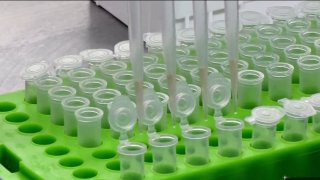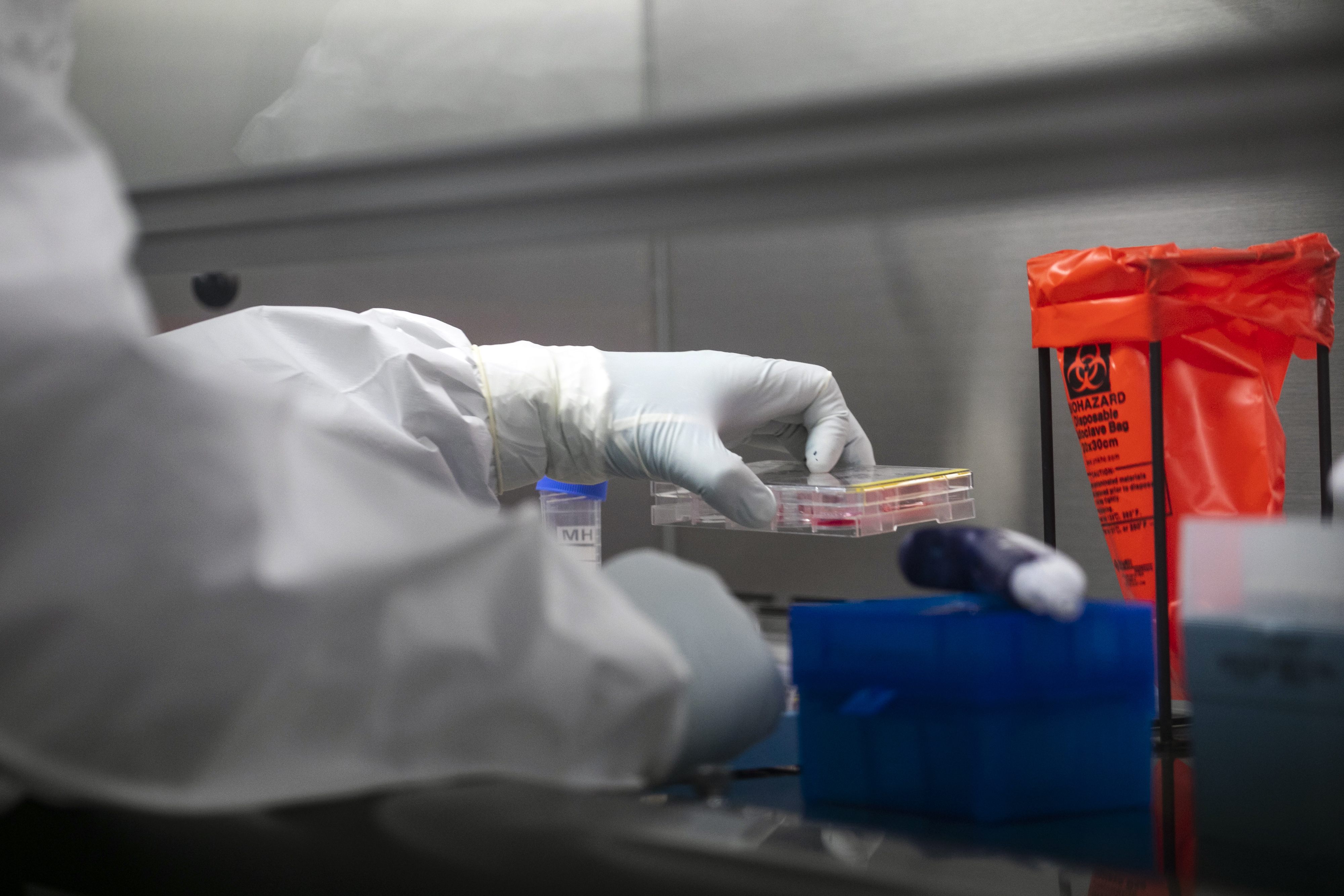
During a coronavirus update Friday, Chicago's top doctor said that new COVID variants are emerging "more quickly right now," potentially marking a turning point in the pandemic as it enters its third winter.
While none of the recent rapidly-rising subvariants have reached the threshold of "variant of concern," they are being closely monitored as colder weather shifts more activities indoors.
According to CDPH Commissioner Dr. Allison Arwady, all of the rising variants remain under the omicron umbrella.
"Subvariants emerge when COVID spreads and so the fact that we are also starting to see more emergence of these subvariants tells me that the COVID virus is on the move a little bit from an immune evasion perspective," Chicago Department of Public Health Commissioner Dr. Allison Arwady said.
Feeling out of the loop? We'll catch you up on the Chicago news you need to know. Sign up for the weekly Chicago Catch-Up newsletter here.
Despite the rise of the recent variants, BA.5 remains the dominant variant in the U.S., according to CDC data.
BA.5 is still making up approximately 62.2% of COVID cases in the U.S., keeping the subvariant as the most dominant strain of COVID since early July.
While the BA.4.6 subvariant is still the second-most prevalent at 11.3%, several descendants of BA.5 are rapidly gaining round. According to the CDC, BQ.1 is now responsible for 9.4% of cases, while BQ.1.1 is responsible for an estimated 7.2% of cases.
These numbers are causing some concern in the medical community, as the National Institutes of Health warns that some emerging subvariants could be resistant to monoclonal antibodies, robbing physicians of a key tool in pushing back against COVID.
"So all of these BA, BQ, BF, the numbers - those are all subvariants of omicron," Arwady said. "The thing that I am most worried about, which we have not yet seen and I hope we do not see, is the emergence of a new variant of concern. A variant of concern is when we give it a new name - you remember, like alpha, delta, omicron. Just yesterday, the WHO met and continued to say none of these new subvariants are different enough to meet the definition for a new variant of concern. But if you hear us starting to talk about the next letter of the Greek alphabet, that marks a major change and a real concern. And the thing I do not know the most for this winter is whether we will see the emergence not just of an Omicron sub variant, but a completely different variant of concern."
So far the new omicron subvariants have been making headlines as "nightmare" or "scrabble" COVID variants.
According to reports, the terms "Scrabble" variants was first used by Peter Hotez, co-director of the Center for Vaccine Development at Texas Children's Hospital, during an interview with the Houston Chronicle, referring to letters like B, Q and X, which are valued at high points in the game.
One important thing to note is that the XBB variant, also being called the "nightmare" variant in some reports, has not yet been detected in the U.S. But BQ.1 and BQ.1.1 are seeing some rapid increases, even in the Midwest, which has some experts worried.
"The ones that are particularly concerning are BQ.1 and another related one called BQ.1.1. Those are two that are expanding fairly rapidly in the United States," Roy Gulick, chief of the division of infectious disease at Weill Cornell Medicine and NewYork-Presbyterian Hospital, told CNBC this week.
BQ.1 and BQ.1.1 are likely to be resistant to the bebtelovimab treatment, while BF.7 is also likely to be resistant to tixagevimab and cilgavimab. Both BQ.1 and BQ.1.1, as well as BA.4.6, could also be resistant to the latter two treatments.
The monoclonal antibodies are recommended by the CDC for use when Paxlovid or remdesivir cannot be safely prescribed to nonhospitalized adults who are at high risk of severe COVID infection.
Paxlovid does interact with certain other drugs, and is not recommended for patients with severe kidney illness or certain other ailments, according to a factsheet from the Food and Drug Administration.
Another concern is whether the new variants can evade treatment from Evusheld, which is used to prevent infections in those who are immunocompromised and not generating enough response from the vaccine.
The U.S. Food and Drug Administration earlier this month updated its information for health care providers to state that those receiving the treatment could be at an "increased risk for developing COVID-19 when exposed to variants of SARS-CoV-2 that are not neutralized by Evusheld."
Other COVID treatments are expected to remain effective against the new variants, and the new bivalent COVID vaccines are also expected to help prevent serious illness or death.
Van Kerkhove said there have been no signs of increased severity in the XBB, BQ.1.1 and BQ.1 variants, "but it's very early, and we have very little data to assess this."
"We need to be prepared for this," the doctor said. "Countries need to be in a position to conduct surveillance, deal with increases in cases and perhaps deal with an increase in hospitalizations. We don't see a change in severity yet and our vaccines remain effective, but we have to remain vigilant."
Where experts are also concerned is the emergence of a "tripledemic."
"The triple combo you don't want is flu, COVID and RSV and the other respiratory illnesses," Arwady said, adding that it is possible for someone to contract all three at the same time.
"In theory, you could have them all at once," she added. "That would be a not good situation because these viruses are not related to each other and we definitely have seen examples of people having COVID and flu at the same time, which is not good news. And a child could have RSV and flu at the same time or RSV and COVID potentially."
Arwady, Chicago-area doctors and national health experts have been predicting a particularly challenging flu, COVID and respiratory virus season ahead. Already, hospitals in the Chicago area are filling up with sick children, many of which are suffering from intense RSV cases.
“As health professionals, I think we can say that we are concerned,” Cook County Health Dr. Gregory Huhn said. “Historically, we know that the upcoming months typically lead to a surge in COVID.”
Cases in Illinois are showing some signs of increase.
Three Illinois counties are now at “high transmission” rates of COVID, meaning the CDC is recommending individuals to wear masks in those areas.
Illinois has seen large surges in COVID in successive winters, including the omicron-driven surge in the winter of 2021-22 that ultimately led to a wave of illness that was sickening more than 30,000 Illinois residents per day.
Experts continue urging people to get vaccinated not just for flu but also with the new bivalent COVID booster shot.
"You need to get both vaccines," Arwady said. "Everybody age 6 months and up should get a flu vaccine this fall. Everybody 6 months and up should have had their COVID vaccine. And if you are 5 years and up, you need to get a fall 2022 booster."
Get updates on what's happening in the Chicago area to your inbox. Sign up for our News Headlines newsletter.



